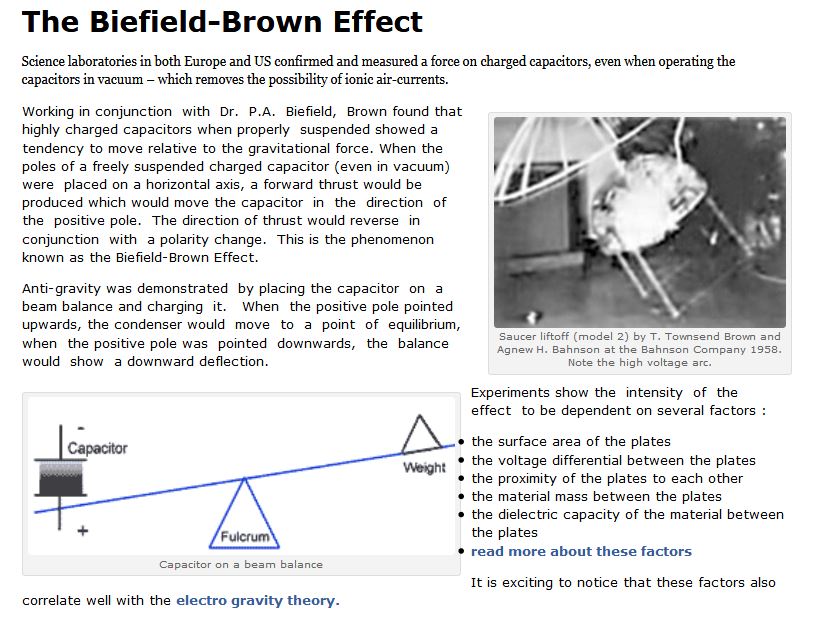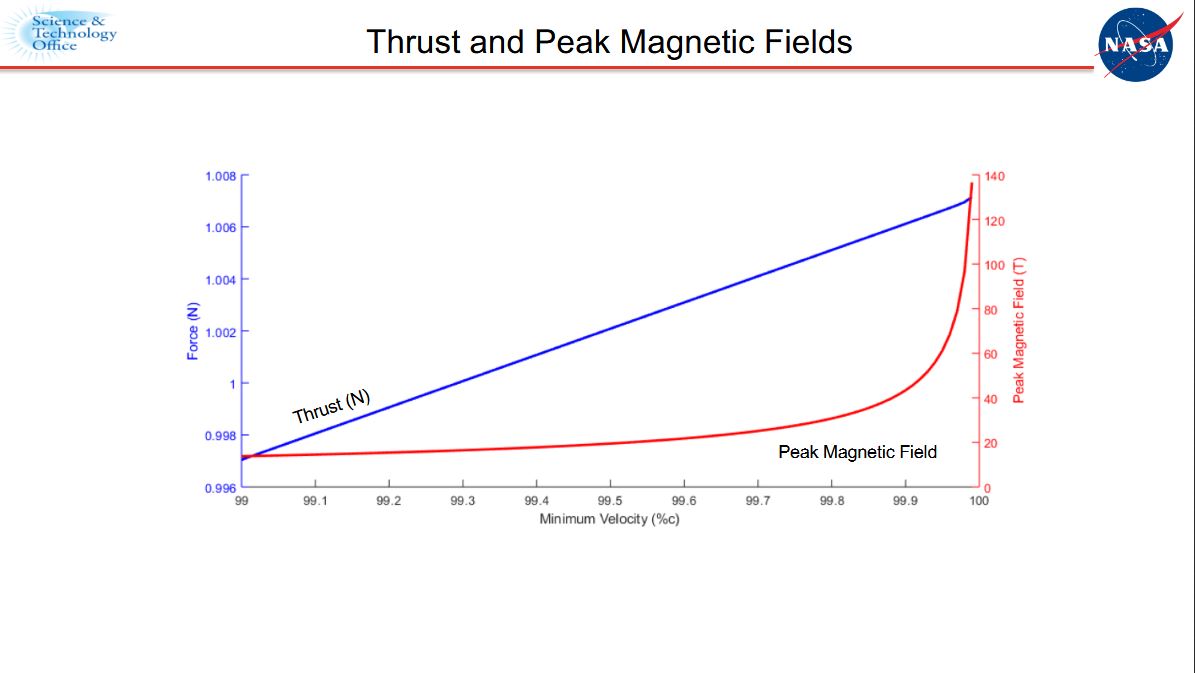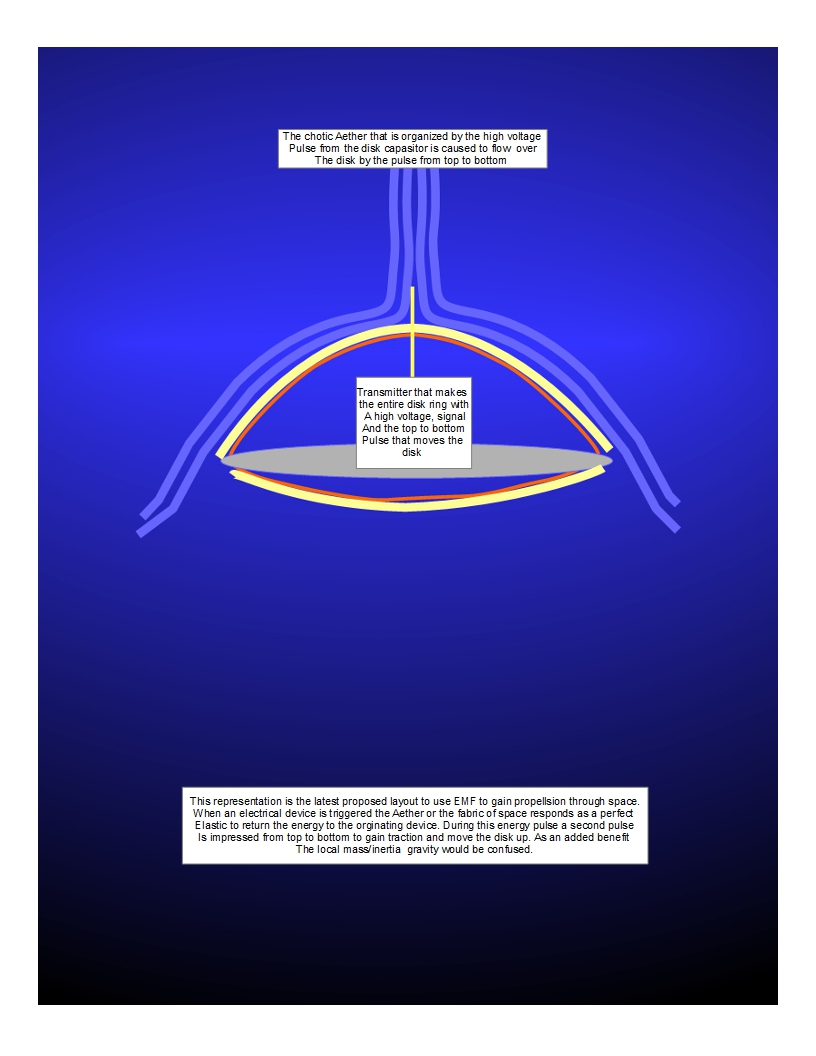From paper; Discussion
Before providing some qualitative thoughts on the proposed physics potentially at work in the tapered RF test articles, it will be useful to provide a brief background on the supporting physics lines of thought. In short, the supporting physics model used to derive a force based on operating conditions in the test article can be categorized as a nonlocal hidden-variable theory, or pilot-wave theory for short.
Pilot-wave theories are a family of realist interpretations of quantum mechanics that conjecture that the statistical nature of the formalism of quantum mechanics is due to an ignorance of an underlying more fundamental real dynamics, and that microscopic particles follow real trajectories over time just like larger classical bodies do. The first pilot-wave theory was proposed by de Broglie in 1923 [4], where he proposed that a particle interacted with an accompanying guiding wave field, or pilot wave, and this interaction was responsible for guiding the particle along its trajectory, orthogonal to the surfaces of constant phase. In 1926, Madelung [5] published a hydrodynamic model of quantum mechanics by recasting the linear Schrödinger equation into hydrodynamic form, where the Planck constant ℏℏ was analogous to a surface tension σσ in shallow-water hydrodynamics and vacuum fluctuations were the reason for quantum mechanics. In 1952, Bohm [6,7] published a pilot-wave theory where the guiding wave was equivalent to the solution of the Schrödinger equation and a particle’s velocity was equivalent to the quantum velocity of probability. Soon after, the Bohmian mechanics line of thinking was extended by others to incorporate the effects of a stochastic subquantum realm, and de Broglie augmented his initial pilot-wave theory with this approach in 1964 [8], adopting the parlance “hidden thermodynamics.” A family of models categorized as vacuum-based pilot-wave theories or stochastic electrodynamics (SED) [9] further explored the concept that the electromagnetic vacuum fluctuations of the zero point field represent a natural source of stochasticity in the subquantum realm and provide classical explanations for the origin of the Planck constant, Casimir effect, ground state of hydrogen, and much more.
It should be noted that the pilot-wave domain experienced an early setback when von Neumann [10] published an impossibility proof against the idea of any hidden-variable theory. This and other subsequent impossibility proofs were later discredited by Bell 30 years later in 1966 [11], and Bell went on to say in the preface of his 1987 book [12] that the pilot wave eliminated the shifty boundary between wavy quantum states on the one hand and Bohr’s classical terms on the other: said simply, there was a real quantum dynamics underlying the probabilistic nature of quantum mechanics.
Although the idea of a pilot wave or realist interpretation of quantum mechanics is not the dominant view of physics today (which favors the Copenhagen interpretation), it has seen a strong resurgence of interest over the last decade based on some experimental work pioneered by Couder and Fort [13]. Couder and Fort discovered that bouncing a millimeter-sized droplet on a vibrating shallow fluid bath at just the right resonance frequency created a scenario where the bouncing droplet created a wave pattern on the shallow bath that also seemed to guide the droplet along its way. To Couder and Fort, this seemed very similar to the pilot-wave concept just discussed and, in subsequent testing by Couder and others, this macroscopic classical system was able to exhibit characteristics thought to be restricted to the quantum realm. To date, this hydrodynamic pilot-wave analog system has been able to duplicate the double slit experiment findings, tunneling, quantized orbits, and numerous other quantum phenomena. Bush put together two thorough review papers chronicling the experimental work being done in this domain by numerous universities [14,15].
In addition to these quantum analogs, there may already be direct evidence supportive of the pilot-wave approach: specifically, Bohmian trajectories may have been observed by two separate experiments working with photons [16,17]. Reconsidering the double slit experiment with the pilot-wave view, the photon goes through one slit, and the pilot wave goes through both slits. The resultant trajectories that photons follow arTruespacee continuous real trajectories that are affected by the pilot wave’s probabilistic interference pattern with itself as it undergoes constructive and destructive interference due to reflections from the slits.
In the approach used in the quantum vacuum plasma thruster (also known as a Q thruster) supporting physics models, the zero point field (ZPF) plays the role of the guiding wave in a similar manner to the vacuum-based pilot-wave theories. To be specific, the vacuum fluctuations (virtual fermions and virtual photons) serves as the dynamic medium that guides a real particle on its way. Two recent papers authored by members of this investigation team explored the scientific ramifications of this ZPF-based background medium. The first paper [18] considered the quantum vacuum at the cosmological scale in which a thought experiment applied to the Einstein tensor yielded an equation that related the gravitational constant to the quantity of vacuum energy in the universe, implying that gravity might be viewed as an emergent phenomenon: a long wavelength consequence of the quantum vacuum. This viewpoint was scaled down to the atomic level to predict the density of the quantum vacuum in the presence of ordinary matter. This approach yielded a predicted value for the Bohr radius and electron mass with a direct dependency on dark energy. The corollary from this work pertinent to the q-thruster models is that the quantum vacuum is a dynamic medium and could potentially be modeled at the microscopic scale as an electron-positron plasma. The quantum vacuum around the hydrogen nucleus was considered in much more detail in the second paper [19]. Here, the energy density of the quantum vacuum was shown to theoretically have a 1/r41/r4 dependency moving away from the hydrogen nucleus (or proton). This 1/r41/r4 dependency was correlated to the Casimir force, suggesting that the energy density in the quantum vacuum is dependent on geometric constraints and energy densities in electric/magnetic fields. This paper created a quasi-classical model of the hydrogen atom in the COMSOL Multiphysics software (COMSOL is not an acronym) that modeled the vacuum around the proton as an electron-positron plasma. These analysis results showed that the n=1n=1 to 7 energy levels of the hydrogen atom could be viewed as longitudinal resonant acoustic wave modes in the quantum vacuum. This suggests that the idea of treating the quantum vacuum as a dynamic medium capable of supporting oscillations might be valid. If a medium is capable of supporting acoustic oscillations, this means that the internal constituents were capable of interacting and exchanging momentum.
If the vacuum is indeed mutable and degradable as was explored, then it might be possible to do/extract work on/from the vacuum, and thereby be possible to push off of the quantum vacuum and preserve the laws of conservation of energy and conservation of momentum. It is proposed that the tapered RF test article pushes off of quantum vacuum fluctuations, and the thruster generates a volumetric body force and moves in one direction while a wake is established in the quantum vacuum that moves in the other direction.












25 September 2018 at 5:08 am
@Jim2:
It is looking like pervasive “fields” are all that is real, and “particles” are just what you get when something pokes the field. (So a photon hitting the “electron field” causes the “electron particle” to come into being and changes the “2 slot” outcome to the particle form… )
Basically, if we don’t look then everything is a field. It is when we look that it becomes particles…
Isn’t QM fun? 8-} /sarc;